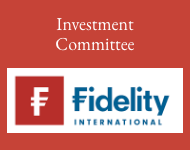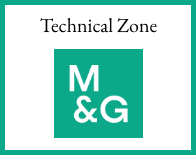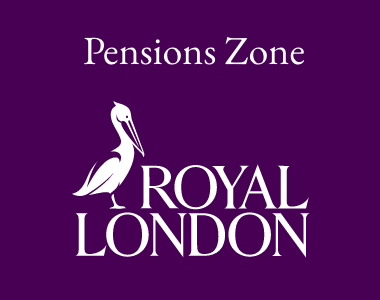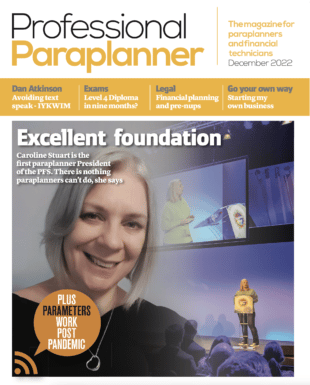Clients who have been funding pensions to transfer wealth to future generations will need financial planning that takes into account not just at IHT but income tax and CGT implications too, says David Downie, technical manager, Aberdeen Adviser.
The 6 April 2027 will mark one of the biggest challenges for financial planners in a generation. Pensions are typically, for many clients, one of, if not the biggest asset they own. Including pensions in the estate will overnight drag many estates into the IHT for the very first time, while others could potentially see their IHT liability more than double.
Despite this significant change, the fundamentals of inheritance tax planning strategies remain unchanged:
• Insuring the liability
• Reducing the value of the estate by giving away assets
Establishing life cover under trust to meet an IHT liability can present challenges related to insurability and continued affordability. However, before giving away assets, it is important to ensure that clients have sufficient income and assets to maintain their lifestyle in retirement and to potentially fund long term care.
For many clients, who will be relying on their pension savings to provide them with a retirement income, the introduction of an IHT charge on pension death benefits is unlikely to result in dramatic change to their financial plans.
However, it’s a different story for those who have been funding pensions to transfer wealth to future generations. These clients will need help to mitigate the increased IHT burden once their pension death benefits are included within the estate.
Which assets to give away
Estate planning needs to be considered holistically across all of client’s assets even though the introduction of IHT on their pension might be the principle reason for seeking advice.
Effectively, most mainstream tax wrappers will be on an equal footing in terms of IHT and it is other taxes, such as income tax and CGT, which will set them apart after April 2027.
Although pensions will be the new kid on the IHT block so to speak, it does not mean that they should initially be targeted as the asset to be gifted. Pensions still protect income and gains from tax which other tax wrappers, apart from ISAs, cannot. This advantage should not be dismissed in a scramble to reduce the potential IHT bill.
When deciding which wrappers to gift from, all tax implications should be considered:
• any tax liability as a result of the gift itself
• the net amount the beneficiary will receive
• retaining the most tax efficient investments.
ISAs
Gifting ISA funds will have no income tax or CGT consequences, but it means giving away an asset which would enjoy tax free returns if retained. The gifted funds will no longer enjoy the ISA tax free status unless the recipient is able to pay them as a subscription into their own ISA. From an IHT perspective, the gift will be a PET or CLT and will be outside the estate after seven years.
Collectives
Giving away collective investments will be a disposal for CGT. Holdover relief may be claimed if the gift is into a discretionary trust, but the gain is only deferred and will be chargeable when the trustees or beneficiary sell the funds. It would also be a PET or CLT for IHT.
If the funds were retained rather than gifted, they would benefit from a CGT uplift to their market value on death.
Investment bonds
Investment bonds can be gifted by way of assignment without creating a chargeable event. There’s no income tax or CGT payable when the bond is assigned, however, the new owner will be liable for any chargeable gains when the bond is surrendered, so it is tax deferred rather than tax free. The assignment will be a PET or CLT for IHT.
Pensions
Most pension funds are currently outside the estate for IHT and consequently there has been no need to give away pension assets to reduce the estate.
However, this will no longer be the case after April 2027. In addition to any IHT, where the member dies after age 75 the death benefits (after deduction of IHT post 6/4/27) will be subject to income tax at the beneficiary’s marginal rate. This creates the potential for a double tax charge of up to 67% where both IHT and income tax at additional rate may be due.
Using pensions as the source for gifts may incur an income tax charge at the time of withdrawal unless the withdrawal is from tax-free cash.
Typically, gifting from pension income should only be considered if it is absolutely certain that pension funds aren’t going to be needed at any point to provide an income in retirement.
If pension funds are surplus to retirement needs, gifting may make sense even if income tax is payable on the withdrawal. This would avoid the double charge of IHT and income tax on post 75 death benefits.
Gifts of pension income will typically be a PET or CLT and outside the estate after seven years. However, the gift could be immediately exempt if it satisfies the conditions of the normal expenditure out of income exemption:
1. It is made from income and not capital
2. It forms part of a pattern of normal expenditure
3. It does not reduce the individual’s standard of living, and they have sufficient income to maintain their expenditure needs
The income does not have to be taxable to meet the condition, so ISA income and tax-free cash from pensions could meet the exemption if all the other conditions have been met.
Gifting options
Gifts can be outright to an individual or under trust if the settlor wishes to retain some control over who benefits and when.
Ad-hoc gifts
Trust options
• Gift trusts offer an outright gift into trust which is effective for IHT. The gifted amount will be outside the estate after seven years. These offer various trust types from bare trusts, where the named beneficiary cannot be changed, to discretionary trusts where the trustees can choose from a wide range of potential beneficiaries.
• Loan trusts are created by lending rather than gifting money to trust. This means there is no PET or CLT and the outstanding loan remains in the estate for IHT. However, it means all investment growth is outside the for IHT and the settlor can recall the loan at any time, giving them access to the original capital.
• Discounted gift trusts allow the settlor to make a gift into trust but retain access to regular fixed payments for the rest of their lifetime. The value of the gift for IHT purposes is discounted by the estimated value of the future payments, meaning a reduced PET or CLT. On death, any remaining trust assets are distributed to the beneficiaries. In order to be effective for IHT, it is important that the settlor spends the regular payments, or they will be included in the estate.
Regular gifts
There are several options available to maximise the value of regular gifts, particularly those making gifts out of surplus income.
• They could be used to fund whole of life policy or a term life insurance policy to potentially meet the extra IHT resulting from pension death benefits getting caught in the IHT net.
• Withdrawals could be invested back into ISAs or pensions for a third party, such as children or grandchildren, ensuring that income and gains remain tax-free. ISAs offer tax- free withdrawals for those who might want access before retirement.
• For a pension contribution, the third party can claim tax relief at their highest marginal rate, which could recover some or all of the income tax paid by the individual making the withdrawal. Non-earners such as grandchildren can make a gross annual pension contribution of £3,600. Working age children could have contributions paid on their behalf up to their annual relevant earnings, subject to having sufficient annual allowance. This can help them build a nest egg for retirement, freeing up income for other purposes such as repaying a mortgage.
• Payments towards life insurance premiums, ISA investments and pension contributions satisfying the normal expenditure out of income exemption conditions would be immediately exempt.
This kind of financial planning can ultimately offer opportunities to engage with the next generation whilst retaining assets under advice. However, care should be taken that the focus is not solely on saving IHT and that individuals are left with sufficient assets to meet their future retirement needs or pay for care in later life.
Main image: jon-tyson-qAQsVsSxp_w-unsplash































